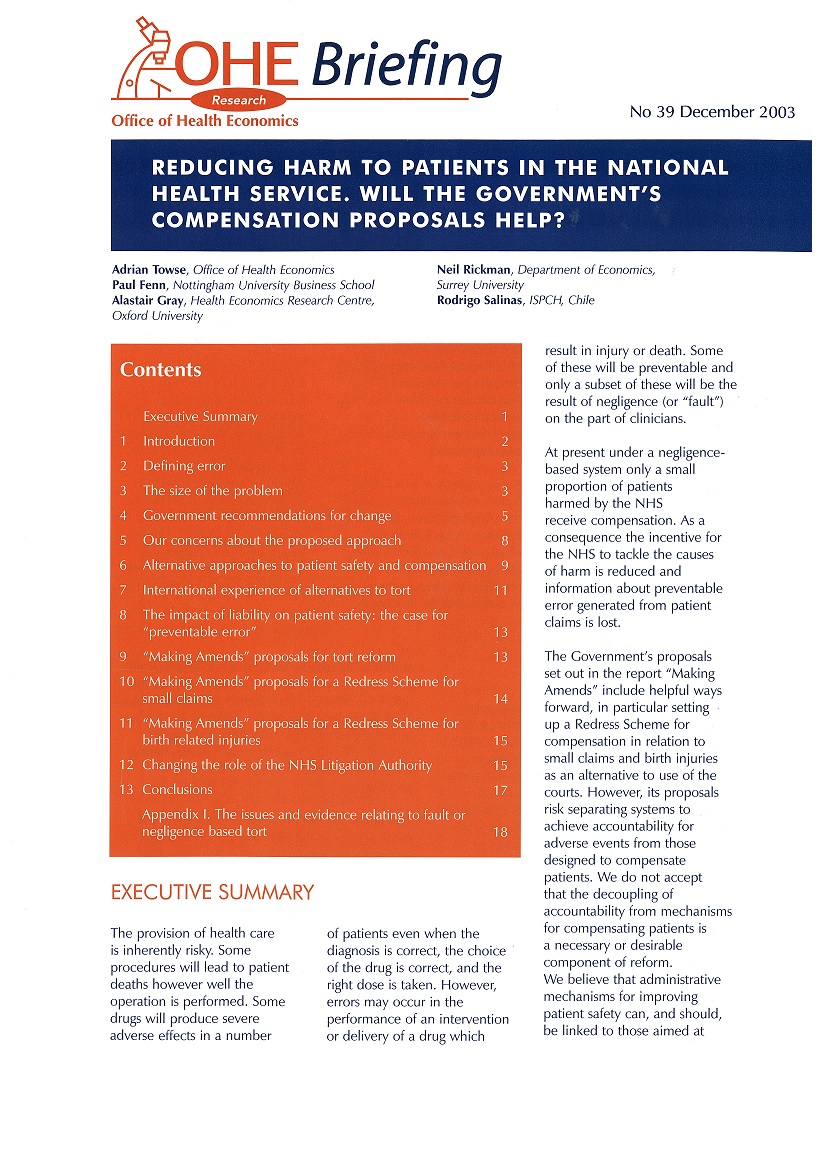Unlocking the Value of Combination Therapies

The UK government hopes that the proposals in the report of the Department of Health’s Chief Medical Officer “Making Amends” (CMO, 2003) will make its NHS safer whilst ensuring that patients who are harmed get compensation more quickly and more efficiently than at…
The UK government hopes that the proposals in the report of the Department of Health’s Chief Medical Officer “Making Amends” (CMO, 2003) will make its NHS safer whilst ensuring that patients who are harmed get compensation more quickly and more efficiently than at present. The Making Amends proposals seek to achieve this by setting up administrative mechanisms for compensating patients. These will provide an alternative to the existing court based “tort” system, whereby patients sue doctors and hospitals for negligence in order to get compensation. These changes should be helpful. They will reduce administrative costs and lead to more patients injured by adverse events getting compensated. However, the changes will only contribute to the overriding objective of reducing the number of NHS patients harmed in the future if the administrative mechanisms for compensating patients who are harmed are linked to those aimed at improving patient safety. It is not clear that the government’s proposals will achieve this. Yet the link is essential for two reasons: so that information from patient compensation claims can be used to improve patient safety; and so that a hospital’s record in harming patients costs it money, giving it a strong financial incentive to invest in preventing errors.
This paper sets out the context of the extent of medical error in the NHS and the current tort system for negligence, discusses the issues the government’s proposals raise, and sets out how these proposals can be made more effective by ensuring a link between safety systems and compensation mechanisms.
Reducing Harm to Patients in the National Health Service. Will the Government’s Compensation Proposals Help?
